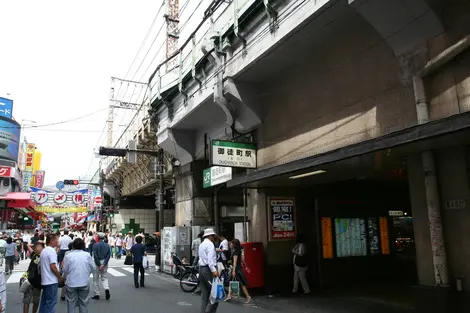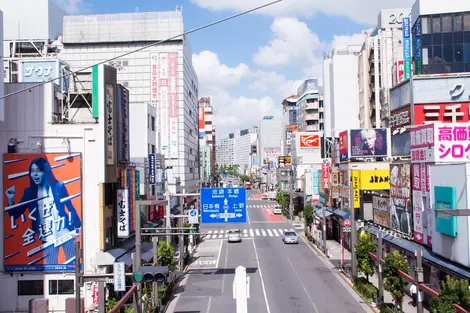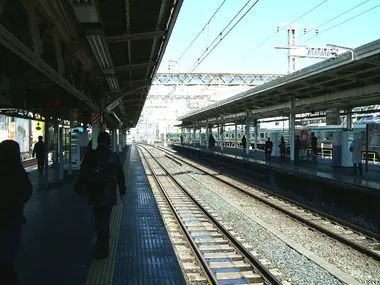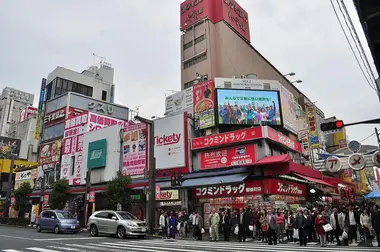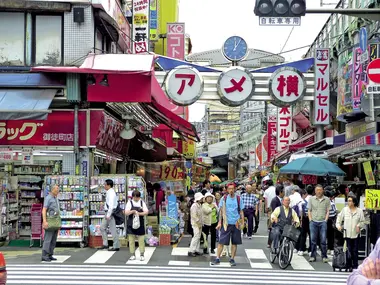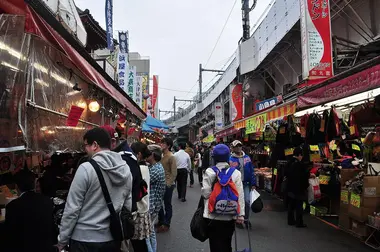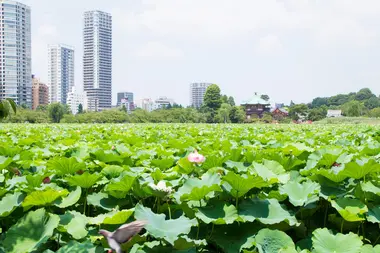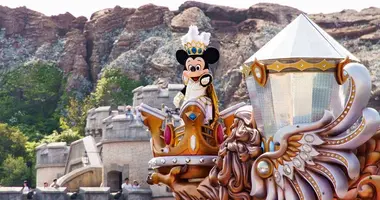Okachimachi, a lively shopping district in the heart of Tokyo
- Published on : 27/03/2024
- by : O.F.
- Youtube
Okachimachi is a lively district in Tokyo's northeastern Taitô district, centered around Okachimachi station, between the major Ueno and Akihabara stations. A mecca for shopping and eating with the Ameya-Yokochô, "Ameyoko" shopping street, it provides direct access to the southern entrance of the famous Ueno Park. Come and discover the lively, friendly atmosphere of this popular district, with its mix of traditional small shops and colorful street markets.
Okachimachi station at the center of neighborhood life
Okachimachi station was inaugurated on November 1, 1925. Today, it is served by two JR East lines: the Yamanote line, which loops around Tokyo, and the Keihin-Tôhoku line, which connects the cities of Saitama, Kawaguchi, Tokyo, Kawasaki and Yokohama. The station is wedged between the large Ueno station to the north and Akihabara to the south. It is surrounded by numerous other stations, including Ueno-Okachimachi (Oedo line), Ueno-Hirokoji (Ginza line), Naka-Okachimachi (Hibiya line), Yushima (Chidoya line) and Shin-Okachimachi (Ueno and Tsukuba Express lines). A veritable rail hub in the heart of the capital!
The north exit of the station leads directly to Ameya-Yokochô, Ueno's famous shopping street and open-air market. Thousands of visitors flock here every day to enjoy the lively atmosphere and stroll between the hundreds of stalls offering food, clothes and all kinds of objects at attractive prices. You can still feel the atmosphere of the old black markets that appeared after the Second World War, with the passionate harangue of the merchants.
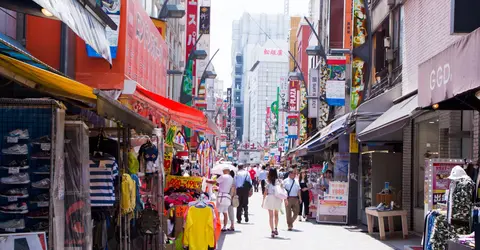
Okachimachi
Dick Thomas Johnson
Ameya-Yokochô, the must-visit shopping street
Also known as "Ameyoko", Ameya-Yokochô is a busy, bustling shopping street that stretches for around 500 meters along the Yamanote line, between Okachimachi and Ueno. It's home to over 400 small stalls and stores selling everything from fresh produce and spices to clothes, shoes, bags, cosmetics and jewelry. All at prices often much lower than elsewhere. It's even possible to negotiate - a rarity in Japan!
Ameyoko developed in parallel with the railroad line after the war. Thestreet is particularly crowded at the end of the year, when Tokyoites come here to do their holiday shopping. Some clothes shops even temporarily transform themselves into food vendors for the occasion!
At the gateway to Ueno Park and its many attractions
From the north exit of Okachimachi station, it's a short walk to the south entrance of Ueno Park. This vast 53-hectare green space is brimming with cultural attractions and places where Tokyoites can relax. You can admire the lotus-covered Shinobazu Pond in summer, stroll along the cherry-blossom-lined paths in spring, visit the many museums and shrines, or take a break at the Bentendo temple on an islet in the middle of the pond.
Right at the entrance to the park is the Shitamachi Museum, which presents the history of the region and the daily life of its inhabitants during the Edo period (1603-1868). The second floor faithfully recreates the living spaces of the period, such as shops and traditional houses. On the second floor, numerous objects and even antique toys are on display, testifying to the way of life of the local population during this period.
A district surrounded by numerous other stations for easy commuting
In addition to JR Okachimachi station, many other subway stations serve the district, making it easy to reach different parts of the Japanese capital:
- Ueno-Okachimachi on the Oedo line
- Ueno-Hirokoji on the Ginza line
- Naka-Okachimachi on the Hibiya line
- Shin-Okachimachi on the Oedo and Tsukuba Express lines
- And nearby, the major stations of Ueno (JR Yamanote, Keihin-Tohoku, Joban, Takasaki, Utsunomiya, Shinkansen, Ginza and Hibiya metro lines) and Akihabara (JR Yamanote, Keihin-Tohoku, Sobu, Shinkansen, Hibiya metro lines).
The lively atmosphere of the old post-war black markets
Ameyoko's distinctive atmosphere, with its fervent merchants and profusion of stalls, has its origins in the black markets that sprang up after the Second World War. Here, you could find all sorts of hard-to-get products, often smuggled by the American occupiers. In fact, the street is said to have been named after sweets that were unobtainable at the time, "Ameya" meaning "candy store".
Although the district has changed a lot since then, you can still feel the lively, good-natured atmosphere as you stroll down Ameyoko. Shopkeepers don't hesitate to harangue passers-by to boast about their products, prices are negotiated and little treasures unearthed, all in a warm and cheerful atmosphere. It's a refreshing and authentic interlude in Tokyo!
Typical little shops under the tracks of the Yamanote line
The Okachimachi district grew organically around its station and the overhead tracks of the Yamanote line linking it to Ueno. Ameyoko came into being by taking over these spaces trapped beneath the tracks, giving rise to the typical rows of small family shops and restaurants.
You'll find everything here, often at unbeatable prices: fishmongers with stalls overflowing with fresh produce, greengrocers, spice and condiment sellers, butchers, clothing and shoe stores, leather goods stores, as well as numerous street food stalls offering grilled meats, takoyaki, yakitori and other snacks to enjoy on the go. Immerse yourself in the lively, authentic atmosphere of Japanese shopping streets!


